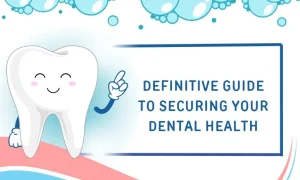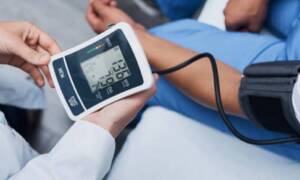Whether to work out on an empty stomach or not remains a topic of debate among fitness experts and fitness fanatics alike. While some suggest that fasted cardio is a guaranteed method of burning fat faster, some remain unconvinced. However, before you decide to do it, it is highly encouraged that you research both the benefits of fasted cardio and its side effects thoroughly, to help you decide whether it is meant for you or not. If you’re curious to learn about what is fasting cardio and what exactly it does, you’re at the right place!
What is Fasting Cardio?
The fasted cardio theory has existed since the late 1990s, but it became quite popular when celebrity stars, Jennifer Lopez and partner, Alex Rodriguez talked about how fasted cardio has been their go-to work out plan, last year in 2019.
Of course, seeing how the couple is the fittest couple in Hollywood, people were already halfway convinced about the efficacy of fasted cardio.
As for what is fasting cardio, it is a workout method that entails working out on an empty stomach when the stomach doesn’t have food to process and digest.
Read on below to learn about the benefits and side effects of fasted cardio along with all the necessary details.
Benefits of Fasted Cardio
Exercise has many health benefits regardless of whether you’re doing it in a fasted state or not. Most people turn to fasted cardio because it’s popularly believed that it is very efficient in burning stored fat — which is, well, technically true.
The science behind how it can encourage fat burning? Well, when in a fasted state, the body is low on insulin with no glycogen circulating in the blood. As a result, when the heart rate spikes during cardio in a fasted state, the body turns to utilize stored body fat as fuel.
In short, fasted cardio works by burning stored energy instead of recently consumed energy.
This is especially helpful for people who have been having a hard time trying to get rid of excess stubborn fat that just won’t leave them alone. Other benefits of fasted cardio include:
- Increased lipolysis and oxidation of fat.
- For people who feel sick working out fed, it prevents nausea and an upset stomach while working out.
- If done early in the morning — as it’s usually done — it can help maintain a productive and motivated mood throughout the day.
…But How Does One Achieve This Fasted State?
Fasted cardio is usually done in the mornings, soon after waking up, when the person doing it has not eaten in 8-12 hours. However, according to health and fitness experts, this fasted state may also be achieved later in the day if you’re the kind of person that cannot function without breakfast.
For some people, with faster and more efficient metabolisms, this fasted state may also be achieved within 3-4 hours of eating.
Who Should Try Fasted Cardio?
Of course, because among the main benefits of fasted cardio is aiding in fat loss, it’s great for people trying to do just that. However, research suggests that there is minimal difference between the weight loss results of exercising while fed and exercising in a fasted state.
In which case, it all comes down to preference and your fitness goals. It’s up to you to decide whether you would like to eat before your workout or not.
Who Should Avoid It?
As mentioned above, it’s a matter of one’s personal fitness goals and preferences. It is advised that one should research and understand exactly what is fasting cardio before experimenting with it to help them decide whether it will help them achieve their fitness goals or not.
It must also be taken into consideration that it might have an opposite effect for people trying to build muscle, since, according to some experts, the body may turn to utilize muscle as fuel when it cannot find readily available energy to burn.
So if you’re trying to build muscle, you should probably avoid doing fasted cardio workouts. Additionally, it is also not recommended for people suffering from eating disorders and the like.
Does it Really Work?
Technically, yes. According to research, fasted cardio may speed up fat burning up to 20 times. But, fitness experts explain that while fat burning may speed up during the time you’re doing fasted cardio, it does not remain that way throughout the day.
Experts explain that the body compensates for the burned fat by burning more carbs throughout the day instead of fat, leaving little difference between the results of fed cardio and fasted cardio.
Are There Any Side Effects of Fasted Cardio?
If you have adequate information about what is fasting cardio and how it must be done, then it’s mostly safe.
But still, it’s best if you’re cautious since being in a fasted state means your blood glucose levels are low. This can cause lethargy and lightheadedness and might even cause dizziness and weakness in severe cases.
It is best to get professional advice prior to beginning fasted cardio if you’re diabetic or have other such medical conditions. Other than that, there are no serious side effects of fasted cardio that may cause one harm.
Bottom Line
Understanding what is fasting cardio, how it works and weighing its pros and cons, I’d say it comes down to preference.
If you feel like fasted cardio works better for you than doing exercise while fed, then you can choose to do so. If not, that’s fine as well.
You should, however, know that at the time you’re doing fasted cardio, you might be burning more fat faster than you would while doing it on a full stomach; at the end of the day, it does not equate to more weight loss since your body will somehow find a way to make up for the loss it experienced during a fasted workout, later in the day.
Also, exercising in a fasted state means that your energy levels are lower than they would be if you had eaten. As a result, you will only be able to do low-intensity workouts.
Bottom line is, no one type of exercise is better than the other. It depends on what works for you and what helps you achieve your fitness goals easier.
And of course, if you’re interested, professional advice is never a bad idea too.














